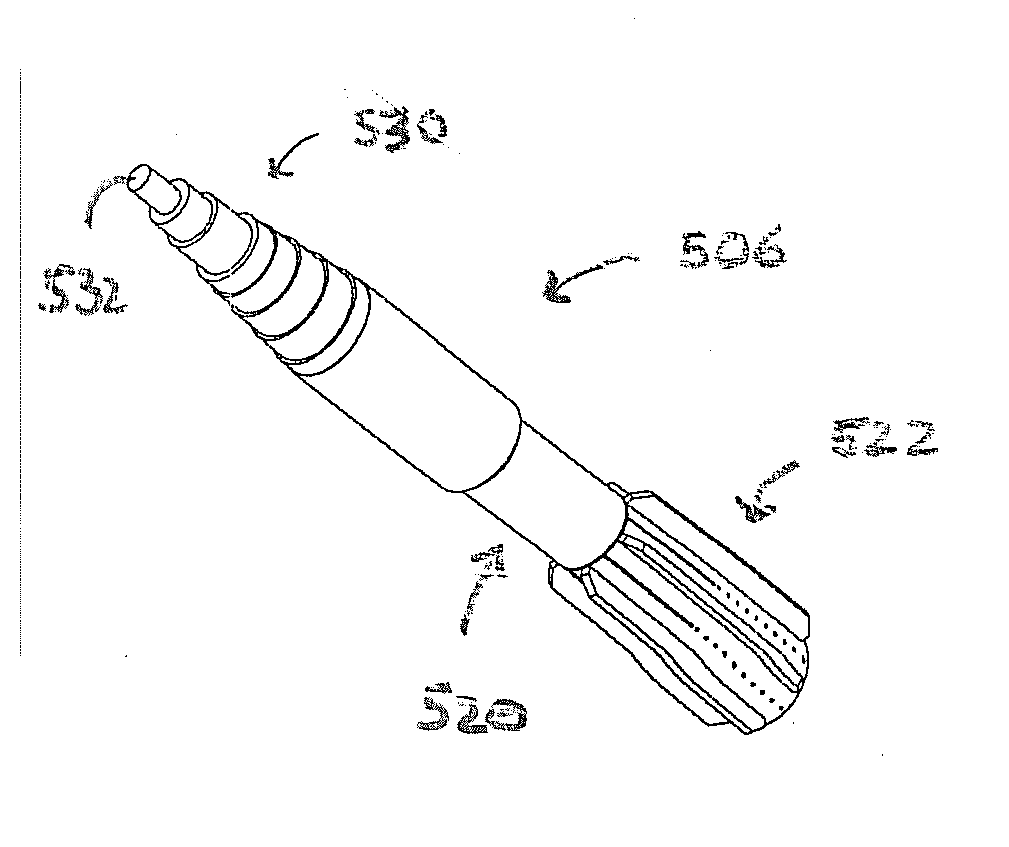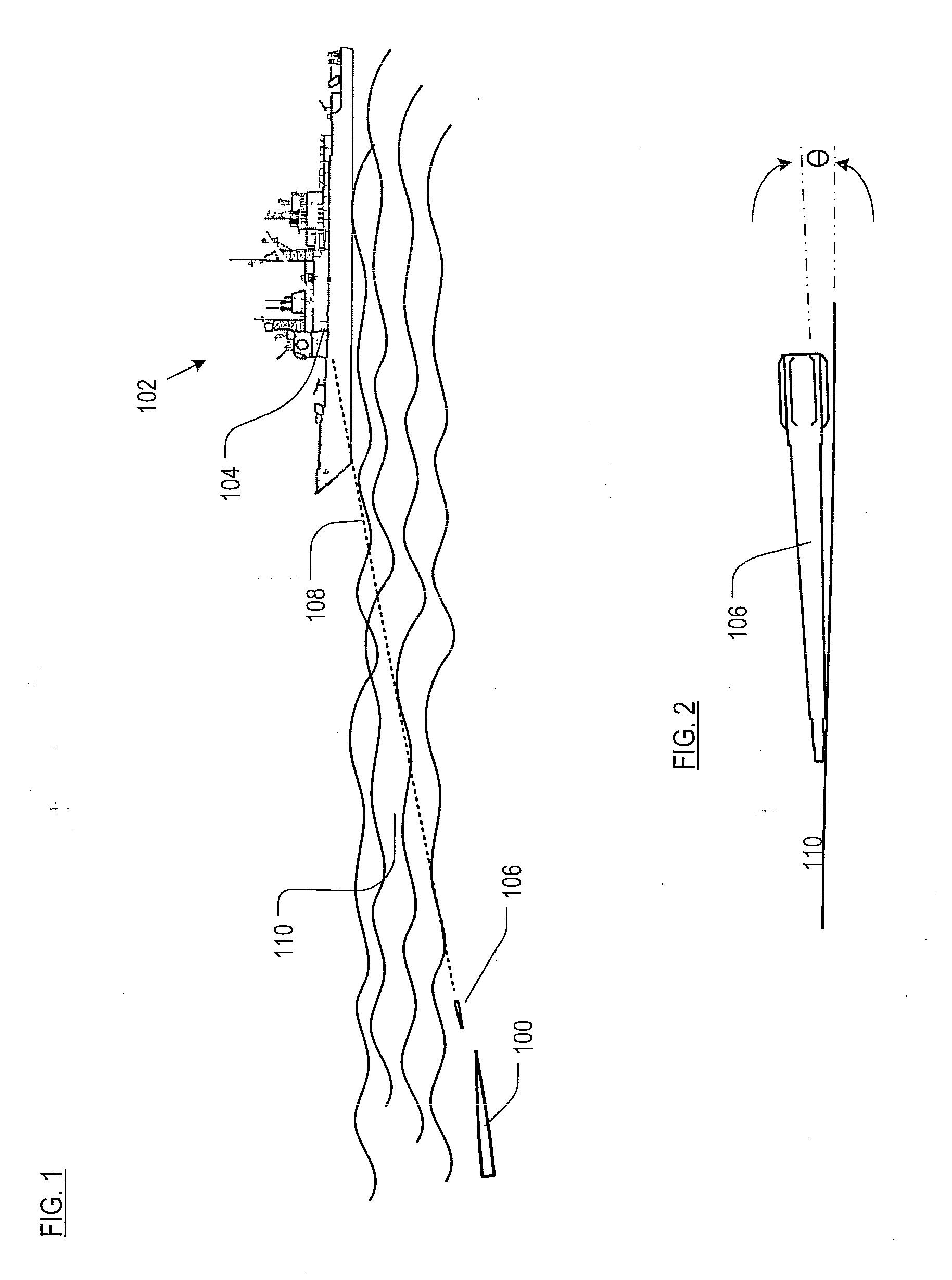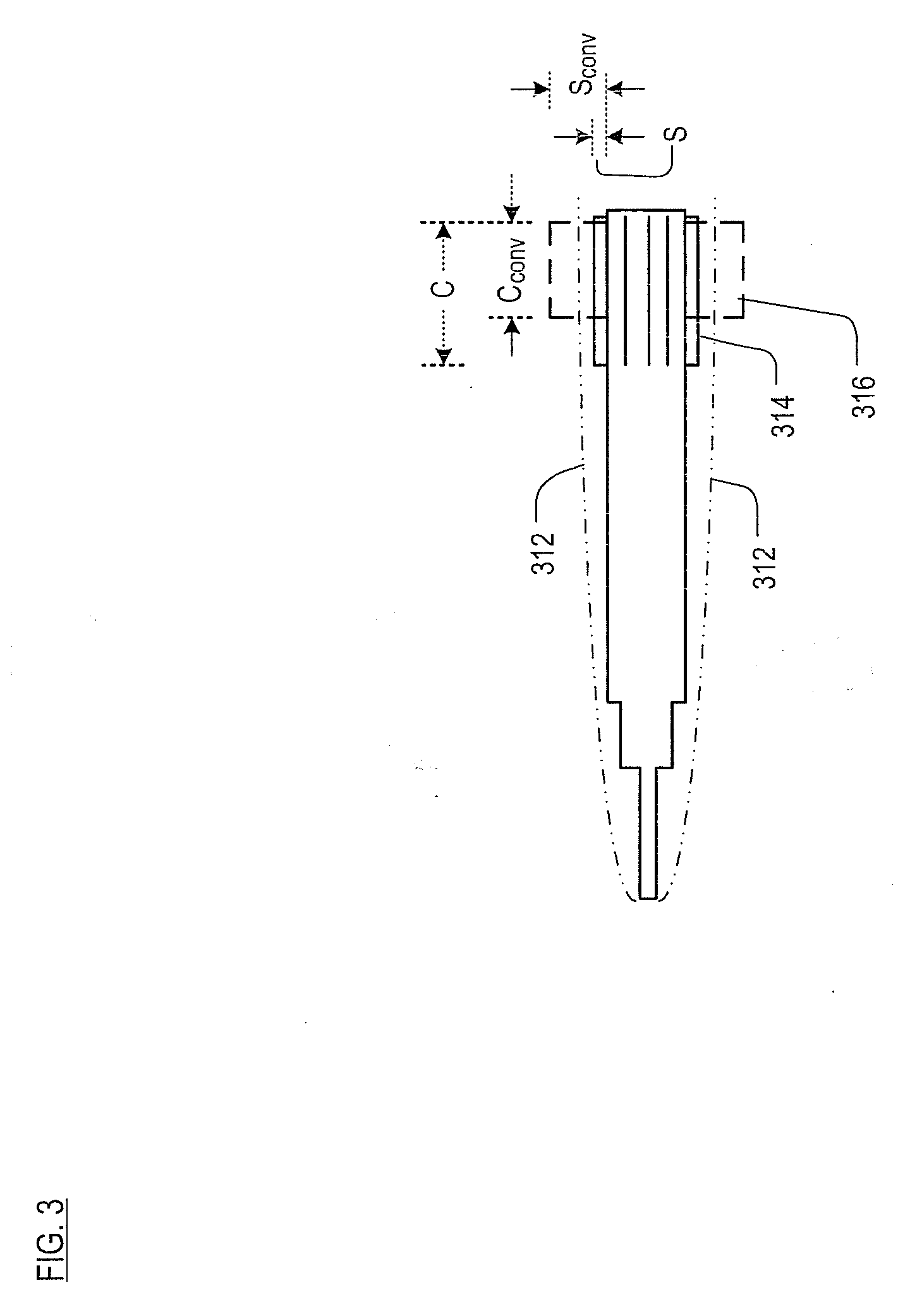Surface Ship, Deck-Launched Anti-Torpedo Projectile
a deck-launched anti-torpedo and surface ship technology, applied in the direction of projectiles, weapons, marine torpedoes, etc., can solve the problems that no deck-launched anti-torpedo has been able to meet all the above-mentioned requirements, and the shkval is potentially a very significant offensive threat, etc., to achieve greater height, reduce the aft portion of the body, and increase the “span”
- Summary
- Abstract
- Description
- Claims
- Application Information
AI Technical Summary
Benefits of technology
Problems solved by technology
Method used
Image
Examples
first embodiment
[0052]Turning now to FIGS. 5 through 8, an anti-torpedo projectile in accordance with the illustrative embodiment of the present invention. As depicted in these Figures, in particular FIG. 5, projectile 506 comprises a plurality of substantially right-circular cylindrical sections 530 that make up the nose section. Tip 532 of the nose is flat, as is required to create the cavitation phenomena. The gradual increase in diameter of the cylindrical sections defines a geometry that remains completely within the bounds of the cavity formed by the blunt nose face. It also prevents the projectile from pitching down (i.e., overturning) during water entry. The aft section of projectile 506 includes region 520, which has a reduced diameter relative to the forward portion of the projectile's body. This enables an increase in the fin span of fins 522.
[0053]FIG. 6 depicts a side view of projectile 506 and shows the diameters of the various cylindrical sections, as well as the chord length of the ...
second embodiment
[0054]FIGS. 9 through 12 depict an anti-torpedo projectile in accordance with the illustrative embodiment of the present invention. As depicted in these Figures, in particular FIG. 9, the nose of projectile 906 comprises only three cylindrical sections 930. Unlike projectile 506, the aft section of projectile 906 is not reduced in diameter. As a consequence, fins 922 have a relatively shorter span than could otherwise be the case.
[0055]FIG. 10 is a side view that depicts various dimensions of projectile 906. FIG. 11 is a cross section along the line A-A of FIG. 10 in the direction shown. FIG. 12 depicts a tail end view of projectile 906 and shows some additional dimensions pertinent to fins 922.
third embodiment
[0056]FIGS. 13 through 16 depict an anti-torpedo projectile in accordance with the illustrative embodiment of the present invention. As depicted in these Figures, in particular FIG. 13, projectile 1306 comprises a nose having two cylindrical sections 1330 and body portion 1340 that is shaped as a right circular cone. Body portion 1340 comprises a taper angle that is less than the minimum intended water entry angle, in this case 3.5 degrees. Like projectile 906, the aft portion of the body is not reduced in diameter. Projectile 1306 includes a plurality of fins 1322.
[0057]FIG. 14 is a side view that depicts various dimensions of projectile 1306. FIG. 15 is a cross section along the line A-A of FIG. 14 in the direction shown. FIG. 15 depicts the multi-piece construction of projectile 1306. In some embodiments, the forward section will be formed of a relatively denser material to site the center of gravity of projectile 1306 relatively forward. FIG. 16 depicts a tail end view of projec...
PUM
 Login to View More
Login to View More Abstract
Description
Claims
Application Information
 Login to View More
Login to View More - R&D
- Intellectual Property
- Life Sciences
- Materials
- Tech Scout
- Unparalleled Data Quality
- Higher Quality Content
- 60% Fewer Hallucinations
Browse by: Latest US Patents, China's latest patents, Technical Efficacy Thesaurus, Application Domain, Technology Topic, Popular Technical Reports.
© 2025 PatSnap. All rights reserved.Legal|Privacy policy|Modern Slavery Act Transparency Statement|Sitemap|About US| Contact US: help@patsnap.com



